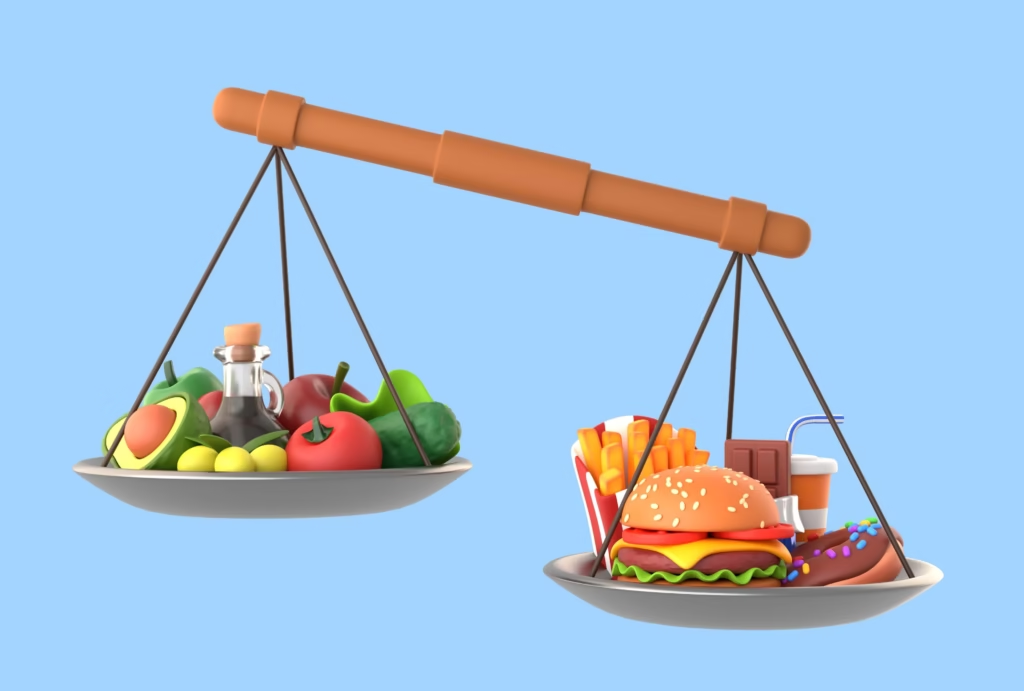When it comes to effective fat loss, the concept of a calorie deficit remains king. It’s simple science: to lose weight, you need to burn more calories than you consume. However, not all calorie deficits are created equal. To set realistic and personalized fat loss goals, it’s crucial to first understand your Body Mass Index (BMI) and daily energy expenditure. In this guide, we’ll break down the relationship between BMI and calorie deficit for weight loss—and show you how to set smart, achievable goals using our free BMI and Calorie Deficit Calculator.
What Is a Calorie Deficit?
A calorie deficit occurs when you consume fewer calories than your body burns in a day. This forces your body to tap into stored fat for energy, leading to weight loss. For example, if your body needs 2,200 calories per day to maintain weight and you consume only 1,700, you’ve created a deficit of 500 calories. Sustaining this deficit over time can result in a steady, healthy fat loss of around 1 pound per week, since one pound of fat is roughly equivalent to 3,500 calories[CDC].
Creating a calorie deficit can be done through dietary adjustments, increased physical activity, or a combination of both. But how do you know how much of a deficit is safe or effective for you? This is where your BMI comes into play.
Understanding BMI: Why It Matters
Body Mass Index (BMI) is a simple tool used to estimate whether your weight is healthy for your height. It’s calculated by dividing your weight in kilograms by the square of your height in meters. While it doesn’t measure body fat directly, BMI provides a useful starting point to evaluate your overall weight status.
| BMI Category | BMI Range |
|---|---|
| Underweight | Below 18.5 |
| Normal Weight | 18.5 – 24.9 |
| Overweight | 25 – 29.9 |
| Obese | 30 and above |
If your BMI falls in the overweight or obese category, a calorie deficit can help you return to a healthier range. Our calculator uses your BMI, age, weight, height, and activity level to determine your ideal daily caloric needs for weight maintenance or loss.

How BMI and Calorie Deficit Work Together
Knowing your BMI helps determine how aggressively you should pursue a calorie deficit. Here’s how:
- Higher BMI: A larger deficit (500–1,000 calories/day) may be appropriate in the early stages of weight loss.
- Normal BMI but High Body Fat: A smaller deficit (250–500 calories/day) combined with strength training might be better for body recomposition.
- Low BMI: A calorie deficit is typically discouraged unless advised by a medical professional.
While BMI gives a general guideline, it doesn’t consider muscle mass. For more accurate tracking, consider pairing BMI with other metrics like waist-to-hip ratio or body fat percentage.
For more about body composition and its impact on training, check out our article on Nutrition for Strength Training.
How to Calculate Your Calorie Deficit
To find your calorie deficit:
- Determine Your TDEE (Total Daily Energy Expenditure): This is the number of calories your body burns in a day, including rest and physical activity.
- Decide on a Calorie Reduction: Subtract 250 to 1,000 calories from your TDEE depending on your weight loss goal.
- Use a Calculator: Our BMI and Calorie Deficit Calculator does this math for you in seconds, giving you personalized maintenance and deficit ranges.
💡 Tip: Never go below 1,200 calories (for women) or 1,500 calories (for men) without supervision. Too little fuel can hurt metabolism and muscle mass, according to the National Institutes of Health.
How Fast Should You Lose Weight?
Sustainable weight loss is about 0.5–1 kg (1–2 lbs) per week. Faster fat loss can lead to muscle loss, energy crashes, and rebound weight gain. If you’re tempted by extreme diets or fasted workouts, make sure to read our take on fasted workouts benefits to understand when they’re appropriate.
How Activity Level Affects Your Calorie Needs
Your activity level plays a major role in determining how many calories you burn each day. When using a calorie calculator, you’ll usually select from:
- Sedentary (little to no exercise)
- Lightly active (light exercise/sports 1–3 days/week)
- Moderately active (moderate exercise 3–5 days/week)
- Very active (hard exercise 6–7 days/week)
- Extremely active (very hard physical job + training)
Choosing the right level ensures your calculated deficit is accurate and sustainable. For example, if you sit all day and overestimate your activity, you may eat too much and stall progress.
Tips to Stick to a Calorie Deficit
- Meal Prep: Plan and prepare meals in advance to avoid impulsive eating. See our full guide on Meal Planning for Busy Professionals.
- Track Intake: Use apps like MyFitnessPal or Cronometer to log food and stay on track.
- Stay Hydrated: Sometimes thirst feels like hunger—drink water regularly.
- Prioritize Protein: It keeps you full longer and helps preserve lean muscle.
- Include Exercise: Combine resistance training and cardio to boost daily energy expenditure.
- Be Flexible: Don’t obsess over every bite. A consistent deficit matters more than perfection.
Signs Your Calorie Deficit Is Too Aggressive
If you experience the following symptoms, consider adjusting your intake:
- Constant fatigue
- Irritability or mood swings
- Loss of menstrual cycle
- Frequent hunger
- Poor workout recovery
- Trouble sleeping
Remember, your body is not a machine. Listen to how it responds and tweak your plan as needed. More is not always better when it comes to cutting calories.
Final Thoughts
Using BMI and a calorie deficit together is one of the most effective ways to lose fat sustainably. By understanding your BMI, calculating your ideal calorie needs, and creating a manageable deficit, you set yourself up for lasting success. Whether you’re aiming to shed a few pounds or kickstart a larger transformation, our Calorie Deficit Calculator is the perfect place to begin.
Don’t forget—consistency beats perfection. And knowledge is your greatest weapon in the battle against stubborn fat.


